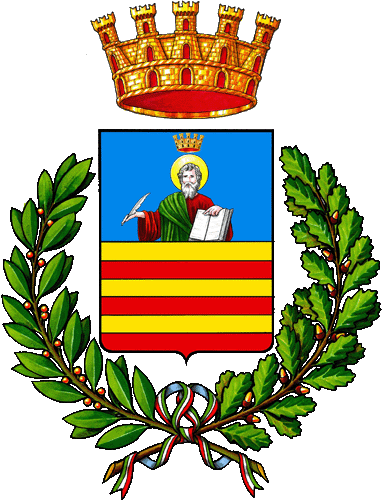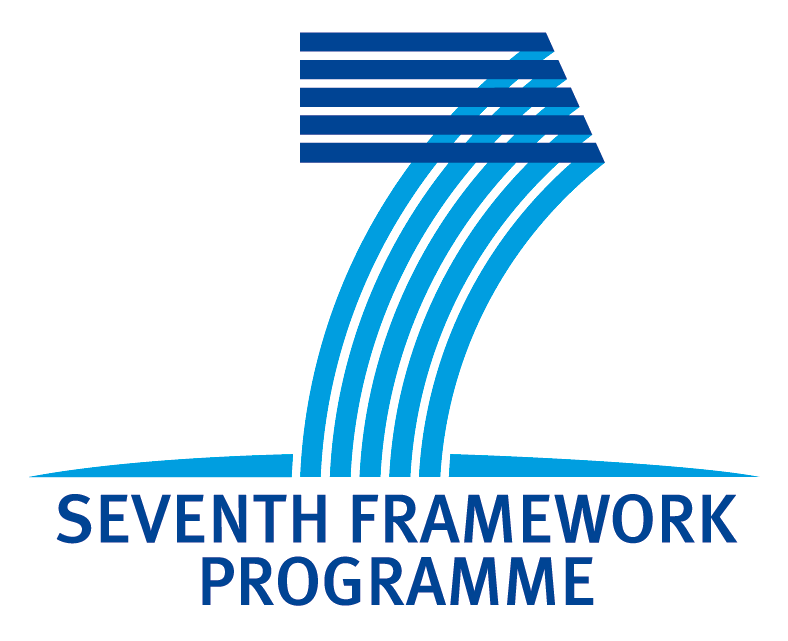Contributed talks
The Euler characteristic of a monodimensional polyhedron as a valuation on a vector lattice
Show abstract
Download the slides
Show abstract
Download the slides
Our aim in this piece of work is to consider the class of monodimensional finitely presented unital real vector lattices and to define on it a class of real-valued functionals, that we call vl-valuations, and that are an analogue of valuations in lattice theory.
To do that, we first use well-known results due to Baker and Beynon to concretely represent a monodimensional finitely presented unital real vector lattice in terms of continuous real-valued piecewise linear functions on some compact monodimensional polyhedron of the n-dimensional Euclidean space, and then we propose an axiomatic definition of vl-valuations. Next, we consider a notable class of functions, that we call vl-hats, and that play here a role analogous to the one that Schauder hats play in MV-algerbas: each element of a monodimensional finitely presented unital real vector lattice, in fact, can be expressed as a linear combination of some set of vl-hats.
Our main result states the existence and uniqueness of the vl-valuation that assigns the value 1 to each vl-hat. Moreover, this vl-valuation coincides at any non-negative function of the vector lattice with the Euler-Poincaré characteristic of the support of the function itself.
To do that, we first use well-known results due to Baker and Beynon to concretely represent a monodimensional finitely presented unital real vector lattice in terms of continuous real-valued piecewise linear functions on some compact monodimensional polyhedron of the n-dimensional Euclidean space, and then we propose an axiomatic definition of vl-valuations. Next, we consider a notable class of functions, that we call vl-hats, and that play here a role analogous to the one that Schauder hats play in MV-algerbas: each element of a monodimensional finitely presented unital real vector lattice, in fact, can be expressed as a linear combination of some set of vl-hats.
Our main result states the existence and uniqueness of the vl-valuation that assigns the value 1 to each vl-hat. Moreover, this vl-valuation coincides at any non-negative function of the vector lattice with the Euler-Poincaré characteristic of the support of the function itself.
On Involutive FLe-algebras
Show abstract
Download the slides
Show abstract
Download the slides
Commutative partially ordered monoids will be referred to as uninorms. Our aim is to investigate involutive uninorms. Our main question is the following: in an involutive FLe-algebra, how far its uninorm (or its algebraic structure, in general) is determined by its “local behavior”, i.e., its underlying t-norm and t-conorm. An answer to this question is presented for a particular case on [0,1] with t = f, which will illustrate our background idea. It says that the uninorm is determined uniquely by any of them, i.e., either by the t-norm or by the t-conorm. In fact, the t-norm and the t-conorm are determined by each other, in this case. Then, a natural question is how far we can extend this, and when the uninorm is determined uniquely? Our main goal is to give an answer to this question: Uniqueness is guaranteed and moreover, the uninorm is represented by the twin-rotation construction whenever the algebra is conic. To have a closer look at the situation, then we consider involutive FLe-algebras which are finite and linearly ordered. As a byproduct it follows that the logic IUL extended by the axiom t ↔ f does not have the finite model property.
Quantifiers on bounded integral residuated lattices
Show abstract
Download the slides
Show abstract
Download the slides
Bounded integral residuated lattices form a large class of algebras which contains algebraic counterparts of several propositional logics behind many-valued reasoning and of the intuitionistic logic. In the paper we introduce and investigate monadic bounded integral residuated lattices which can taken as a generalization of algebraic models of the predicate calculi of these logics in which only a single variable occurs.
(Non-associative) Substructural Fuzzy Logics I: Propositional Logics
Show abstract
Download the slides
Show abstract
Download the slides
The family of mathematical fuzzy logics and their algebraic semantics is ever growing. There are well-developed general theories which provide powerful tools for the algebraic study of non-classical logics in general or
fuzzy logics in particular. However their high level of abstraction and distance
from the particular needs of particular (classes) of fuzzy logics seems to be prohibiting their greater proliferation and a more thorough exploitation of the tools their offer by the broader community of researchers on mathematical fuzzy logic. The goal of this extended abstract is to provide a simplified account of these general theories, i.e. a theory abstract enough to cover the vast majority of existing fuzzy logic, yet rather down-to-earth and simple for the ``working fuzzy logician''. We provide some basic definitions and a sample of the results we can achieve.
fuzzy logics in particular. However their high level of abstraction and distance
from the particular needs of particular (classes) of fuzzy logics seems to be prohibiting their greater proliferation and a more thorough exploitation of the tools their offer by the broader community of researchers on mathematical fuzzy logic. The goal of this extended abstract is to provide a simplified account of these general theories, i.e. a theory abstract enough to cover the vast majority of existing fuzzy logic, yet rather down-to-earth and simple for the ``working fuzzy logician''. We provide some basic definitions and a sample of the results we can achieve.
(Non-associative) Substructural Fuzzy Logics II: Predicate Logics
Show abstract
Download the slides
Show abstract
Download the slides
This contribution extends the paper "(Non-associative) Substructural Fuzzy Logics I: Propositional Logics" to the case of predicate logics. We show how predicate (non-associative) fuzzy logics can be developed in our wide setting by generalizing Hájek's presentation of predicate logic BL.
Natural Deduction Systems for da Costa's Hierarchies of Paraconsistent Logics
Show abstract
Download the slides
Show abstract
Download the slides
NO abstract
On Balanced Implications
Show abstract
Download the slides
Show abstract
Download the slides
We contribute to the theory of implications related by adjointness, in multiple-valued logics. Our focus is moving towards implications in (L,P)-valued propositional logic, whereby L and P always stand for two complete lattices, interpreting two types of truth values. In most applications, they are the unit interval of real numbers under its usual order. We expound motivations behind the use of two lattices in the definition of implications, as a generalization of the usual one-lattice approach.
We introduce and study the notion of balanced implications. We point out that the property of being balanced holds for several types of implications used in fuzzy logic, among which the residuated implications and S-implications are two types. It holds also for several types of implications used in the algebraic structures known in literatures, among which BCK-algebras, Pseudo-BCK-algebras and Reisduated algebras.
We provide complete characterizations of balanced implications and we explore the relationship between this notion and some additional properties for fuzzy implications. Perhaps, the most important consequence of such a study of balanced implications is that a new algebraic semantic for a multiple-valued logic arise. Such a a multiple-valued logic can serve as a combined calculus for a pair of two, possibly different, types of uncertainty.
We introduce and study the notion of balanced implications. We point out that the property of being balanced holds for several types of implications used in fuzzy logic, among which the residuated implications and S-implications are two types. It holds also for several types of implications used in the algebraic structures known in literatures, among which BCK-algebras, Pseudo-BCK-algebras and Reisduated algebras.
We provide complete characterizations of balanced implications and we explore the relationship between this notion and some additional properties for fuzzy implications. Perhaps, the most important consequence of such a study of balanced implications is that a new algebraic semantic for a multiple-valued logic arise. Such a a multiple-valued logic can serve as a combined calculus for a pair of two, possibly different, types of uncertainty.
The variety generated by all the ordinal sums of perfect MV-chains
Show abstract
Download the slides
Show abstract
Download the slides
We present the logic BL_{Chang}, an axiomatic extension of BL (see [Haj98]) whose corresponding algebras form the smallest variety containing all the ordinal sums of perfect MV-chains: moreover, the variety of BLChang-algebras is strictly connected to the one generated by Chang's MV-algebra (that is, the variety generated by all the perfect MV-algebras), from the axiomatic point of view. We will analyze BL_{Chang} and the corresponding algebraic semantics in the propositional and in the first-order case, by proving completeness and incompleteness results.
On o-minimal MV-chains
Show abstract
Download the slides
Show abstract
Download the slides
The aim of this work is to investigate the class of o-minimal MV-chains and some of its relevant properties, such as elimination of imaginaries and definable Skolem functions.
A non-associative generalizaton of a BL-algebras
Show abstract
Download the slides
Show abstract
Download the slides
We introduce a nonassociative generalization of Hájek's BL algebras and moreover we show that the introduced class forms a variety which is generated just by the nonassociative t-norms (continuous, monotone fuctions on interval [0,1] of reals).
A modal logic for belief functions on MV-algebras
Show abstract
Download the slides
Show abstract
Download the slides
We introduce two modal logics to deal with belief functions on MV-algebras. We introduce the class of belief-models, and prove soundness and completeness.
Divisible pseudo-BCK-algebras
Show abstract
Download the slides
Show abstract
Download the slides
We study divisibility and n-potency in the context of pseudo-BCK-algebras that are the residuation subreducts of integral residuated lattices.
L-relations and Galois triangles
Show abstract
Download the slides
Show abstract
Download the slides
The algebra of relations traditionally depends on the principles of the logics involved in the underlying set (or class) theory and reflects the structures assumed in the set of the corresponding truth values. In classical logic, relation algebras have been studied and characterized as algebras of (binary) homogeneous relations, that are boolean algebras with operators. A better suited approach that deals directly with heterogeneous (binary) relations has also been developed. Of course, the big development of many valued logics and mathematics in the last decades and the relevance of relations in pure and applied sciences has favored and increased new appropriate approaches to many valued (binary) relations, their algebra and their structures including the corresponding operators. Abstract characterizations of algebras of homogeneous relations taking values in MV -algebras are considered by Popescu, while abstract categories of heterogeneous relations with values in Heyting algebras are characterized by Winter. Moreover, the algebra of relations, their compositions and corresponding operators have been approached in more general contexts dealing with complete commutative residuated lattices.
As a further step toward a characterization of algebras and categories of binary relations in a more general context we present some results on operators determined by relations taking values in some typical algebras of substructural logics, that are described from the viewpoint of implicative structures, namely extended-order algebras.
As a further step toward a characterization of algebras and categories of binary relations in a more general context we present some results on operators determined by relations taking values in some typical algebras of substructural logics, that are described from the viewpoint of implicative structures, namely extended-order algebras.
A relation between Kripke and Algebraic Semantics for bi-modal Gödel Logics
Show abstract
Download the slides
Show abstract
Download the slides
In a previous paper \cite{CaicedoRodriguez}, we have considered a fuzzy version of
Kripke semantic for modal logic where both the propositions and the accessibility
relation are infinitely valued over the standard G\"odel algebra $[0,1]$. In this context, we have analyzed separately the $\Box $-fragment and the $\Diamond $-fragment of a G\"odel modal logic and
have proved that both fragments have simple axiomatizations which are strongly
complete with respect to that semantics. In addition, we show that the
first fragment does not have the finite model property, although the
second does. Similar results have been given for the uni-modal G\"odel analogues of $D,T,$ and $S4$.
In a current work, we prove strong standard completeness for the bimodal G\"odel logic which combines both modal
operators by adding to the union of the pure uni-modal systems the Fischer Servi connecting axioms (see \cite{FischerServi84}). En the bi-modal context we are able to extend the
completeness result not only to the analogues of $D,T,$ and $S4$ but also the analogue of $S5$ is equivalent to a linear version Prior and Bull MIPC (see Bull \cite{Bull65}).
Our completeness results give extra weight to Fisher-Servi's claim that IK
and its extensions are the natural intuitionistic counterparts of classical
modal logics. These systems, particularly MIPC have been extensively studied
(Simpson \cite{Simpson94}, Ono and Suzuki \cite{OnoSuzuki}, Wolter
\cite{Wolter}, Wolter and Zakharayev \cite{WolterZakha}, Grefe \cite{Grefe98},
Celani \cite{Celani}, Davoren \cite{Davoren}, among many others). However, the semantics
utilized in these works consists of classical Kripke models with a preorder
to interpret the intuitionistic operators and a crisp relation to interpret the
modal operators both commuting in certain way, or algebraic interpretation, specially in
the case of MIPC. These semantics do not translate directly to G\"{o}del-Kripke models
because $IK$ and some of its extensions have the finite
model property with respect to the former (see \cite{FischerServi78}, which is not the case for the
latter as we have pointed out above.
Ono considers in \cite{Ono77} these three different semantics for S4 and its extensions, establishing the connection between the bi-relational classical models and the algebraic ones.
In this presentation, we introduce some preliminary results on bi-modal G\"odel logics and, next, we concentrate in the natural algebraic semantics for these logics and its connection with G\"odel-Kripke semantics, and on clarifying why the same logic has the finite model property in one context, and not in the other.
For that purpose, bi-modal G\"{o}del algebras are introduced and their basic properties are studied.
Bi-modal G\"{o}del algebras interpreting the G\"odel version of $S5$ can be thought of as a linear version of monadic Heyting algebra defined originally by Monteiro and Varsavsky \cite{MonVars57} and deeply studied by Bezhanishvili in \cite{BezhanishviliI} and other works.
Kripke semantic for modal logic where both the propositions and the accessibility
relation are infinitely valued over the standard G\"odel algebra $[0,1]$. In this context, we have analyzed separately the $\Box $-fragment and the $\Diamond $-fragment of a G\"odel modal logic and
have proved that both fragments have simple axiomatizations which are strongly
complete with respect to that semantics. In addition, we show that the
first fragment does not have the finite model property, although the
second does. Similar results have been given for the uni-modal G\"odel analogues of $D,T,$ and $S4$.
In a current work, we prove strong standard completeness for the bimodal G\"odel logic which combines both modal
operators by adding to the union of the pure uni-modal systems the Fischer Servi connecting axioms (see \cite{FischerServi84}). En the bi-modal context we are able to extend the
completeness result not only to the analogues of $D,T,$ and $S4$ but also the analogue of $S5$ is equivalent to a linear version Prior and Bull MIPC (see Bull \cite{Bull65}).
Our completeness results give extra weight to Fisher-Servi's claim that IK
and its extensions are the natural intuitionistic counterparts of classical
modal logics. These systems, particularly MIPC have been extensively studied
(Simpson \cite{Simpson94}, Ono and Suzuki \cite{OnoSuzuki}, Wolter
\cite{Wolter}, Wolter and Zakharayev \cite{WolterZakha}, Grefe \cite{Grefe98},
Celani \cite{Celani}, Davoren \cite{Davoren}, among many others). However, the semantics
utilized in these works consists of classical Kripke models with a preorder
to interpret the intuitionistic operators and a crisp relation to interpret the
modal operators both commuting in certain way, or algebraic interpretation, specially in
the case of MIPC. These semantics do not translate directly to G\"{o}del-Kripke models
because $IK$ and some of its extensions have the finite
model property with respect to the former (see \cite{FischerServi78}, which is not the case for the
latter as we have pointed out above.
Ono considers in \cite{Ono77} these three different semantics for S4 and its extensions, establishing the connection between the bi-relational classical models and the algebraic ones.
In this presentation, we introduce some preliminary results on bi-modal G\"odel logics and, next, we concentrate in the natural algebraic semantics for these logics and its connection with G\"odel-Kripke semantics, and on clarifying why the same logic has the finite model property in one context, and not in the other.
For that purpose, bi-modal G\"{o}del algebras are introduced and their basic properties are studied.
Bi-modal G\"{o}del algebras interpreting the G\"odel version of $S5$ can be thought of as a linear version of monadic Heyting algebra defined originally by Monteiro and Varsavsky \cite{MonVars57} and deeply studied by Bezhanishvili in \cite{BezhanishviliI} and other works.
Monadic Predicate Lukasiewicz Logic. Part 1. Standard versus General Tautologies
Show abstract
Download the slides
Show abstract
Download the slides
We give a method to build explicit monadic formulas which are standard but not general Lukasiewicz tautologies (see the attached file for more info)






